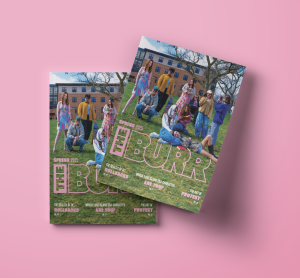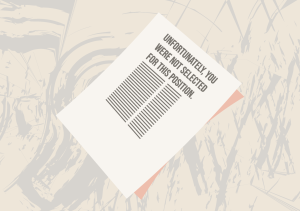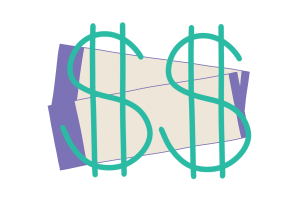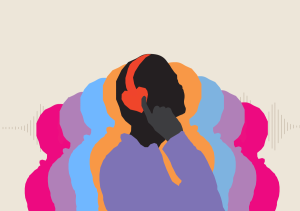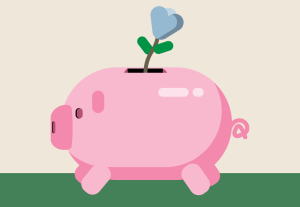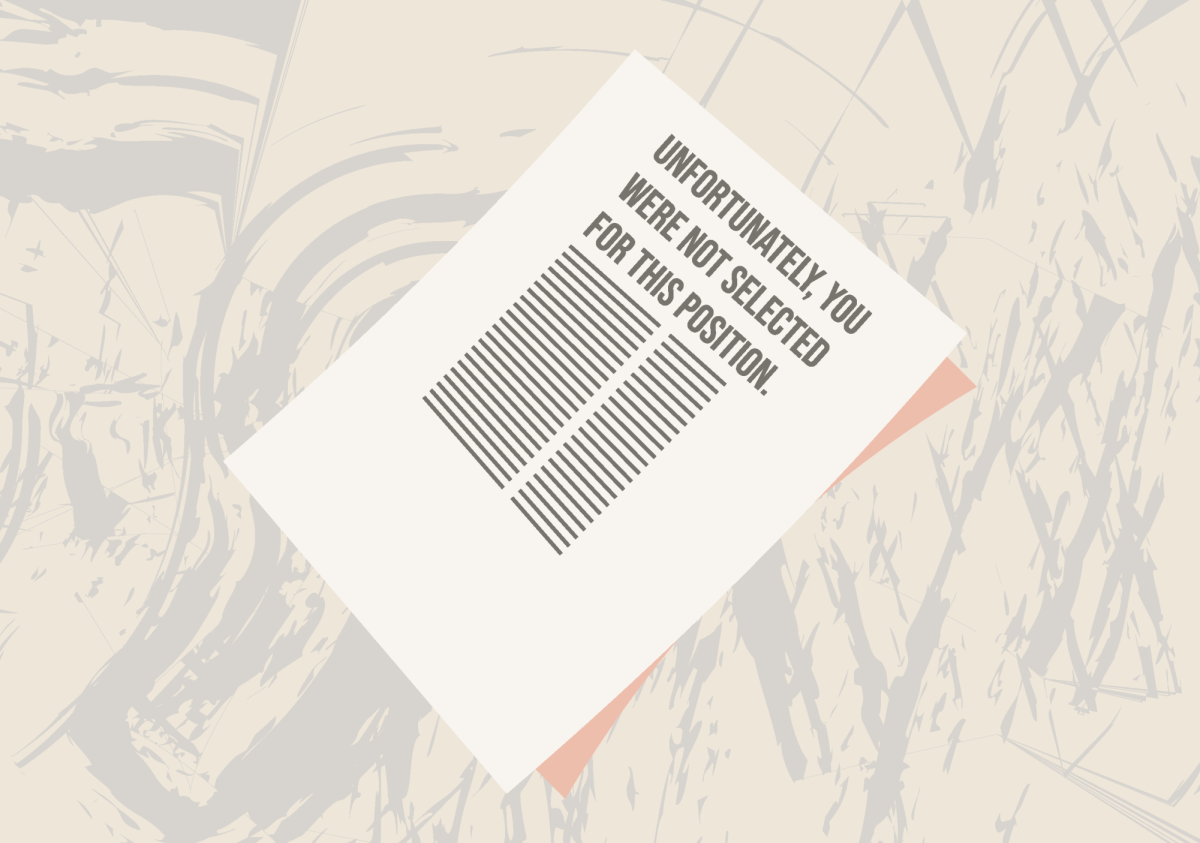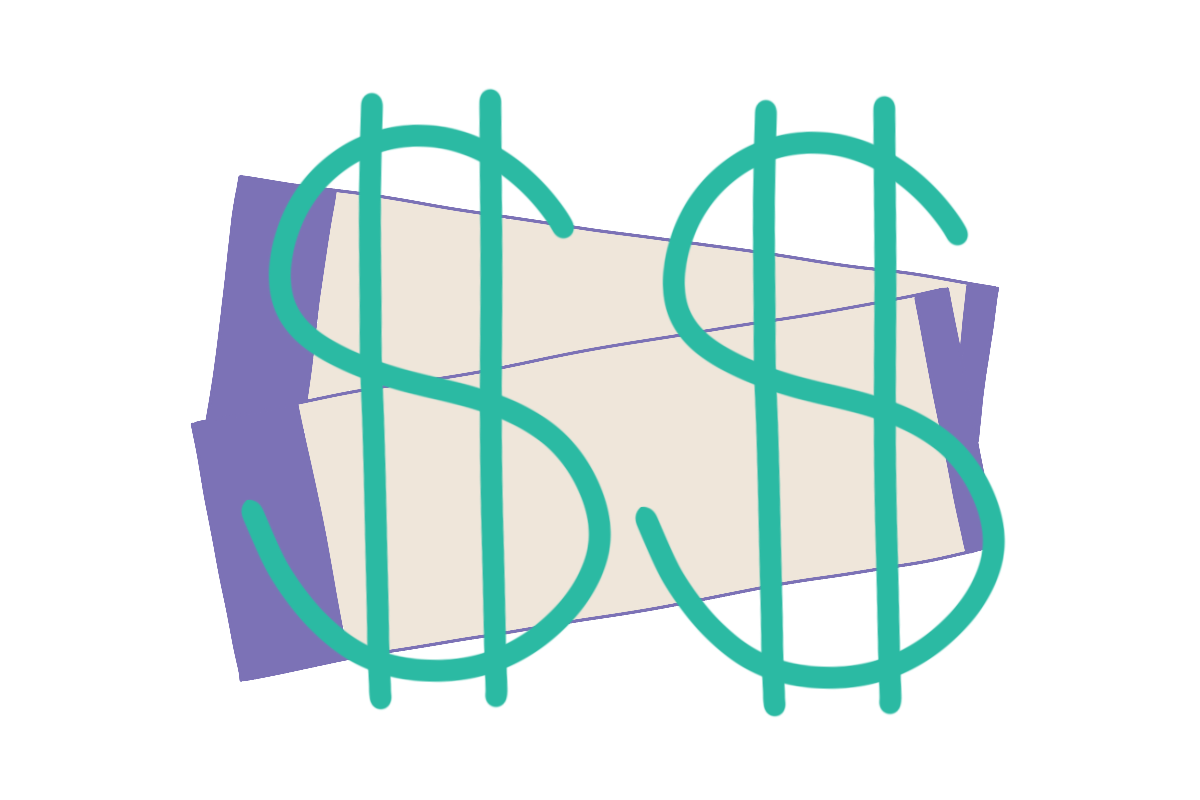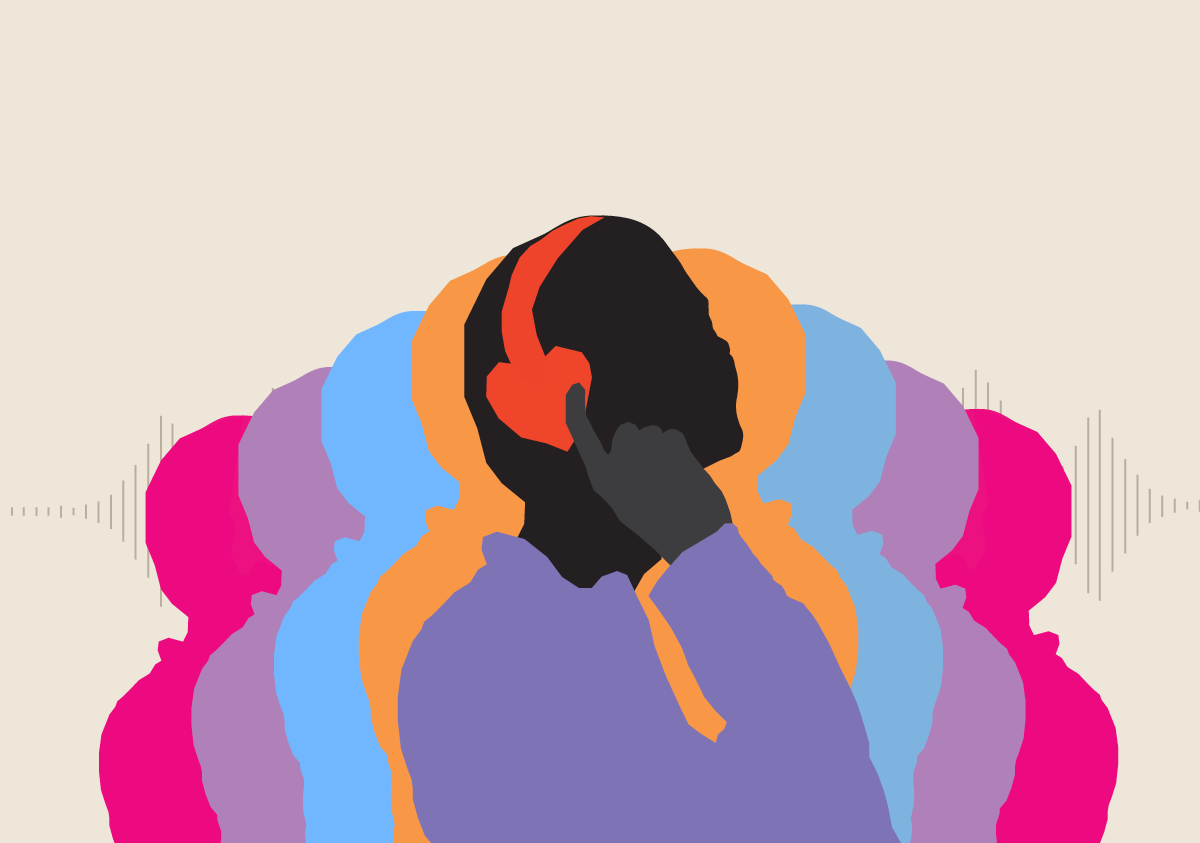In collaboration with The Kent Stater
Chapter 1: Cassie
“Period poverty is not a “women’s issue,” it is a human’s issue. Because without periods there wouldn’t be people, right?” Cassandra Pegg-Kirby stands in her kitchen, cleaning her stove, her smile beaming through the Zoom call’s all-too-familiar screen. She leans over the counter looking comfortable in her t-shirt and cardigan, but the topic is one that usually creates an air of uncomfortable silences and cringe-worthy jabs. The taboo of her talking points? Menstruation.
One in five menstruating teens said they have struggled to afford period products, or haven’t been able to purchase them at all, says one study conducted by Thinx and Period.org. Are you one of these people? If not, you may know someone who has experienced period poverty.
Cassie is the director of Kent State University’s Women’s Center and says, “I’m most passionate about being a conduit, not necessarily to connect people to me, but to connect people to each other.”
Pegg-Kirby says she hopes what she does at the center not only helps students connect to each other, but also to resources that serve themselves, and help them serve their communities also. Programs centered around health and equity help expose students to possible passions. This was the case for a group of student activists who noticed a growing gap between menstruation and accessibility to products.
Chapter 2: The Origins of Period Poverty Awareness at Kent State
The fight for menstrual equity at Kent State began over ten years ago, but it is not over. In the beginning, student activists began to notice the scarcity of period products on and around campus, oftentimes leading people to search far and wide for products when they should have been readily available. Pegg-Kirby says students used to have to hope bathroom dispensers had been filled and that they had a quarter or two on them, or make the trek down to the bookstore on the edge of campus to gain access to such basic products.
But as awareness has grown and time has marched on, the torch has been passed from one group to another, year after year, program after program; menstruation activists at Kent State have fought for the right of those who menstruate to never have to make a choice between sanitary care products or groceries for the last decade.
According to Pegg-Kirby, the activists’ start at a solution was to create a petition with the general sentiments that, “It’s not okay, periods don’t just happen during regular business hours,” and present it to the University’s vice president of student affairs at the time, Dr. Shay Little. This action was a small win as the group secured access to period products at places like Rosie’s Diner and other markets across campus, but of course, they still had to be paid for and the on-campus pricing was still a hefty price to pay for some students.
Chapter 3: Next Steps at Kent
Motivated by the momentum of other campuses, and the realization that period poverty was not just a growing global equity issue, but a local one as well, the activists felt that it was only logical to advocate for free products here at Kent State. Pegg-Kirby says the group had this collective realization prompting the question, “What are we doing in our own backyard to make sure what people here have what they need too? Because without periods there wouldn’t be people, right?”
Continued efforts from student activists like former USG director for student involvement Madison Newingham advocated take-one-leave-one pilot programs to foster an environment of solidarity and support amongst menstruators on campus. Then came the Claires.
“The next step was, how do we get these items on campus for free? We’ve got them on campus now, but they’re still expensive and this is an issue of equity,” says Pegg-Kirby. “I was seeing it when the pantry was at the Williamson House that we provided menstruation products through there so that people who were coming in need also would have access to menstruation products, personal care products, things like that and it was like, people shouldn’t have to choose between paying for tampons or having a meal. That’s really not fair, especially when it’s a biological process that we don’t get to decide whether we do this or not, it just happens.”
Chapter 4: The Claires
Claire Coder, founder and CEO of Aunt Flow, was just 18 years old when she dropped out of the Ohio State University to pursue her passion for menstrual equity and bridge the huge gap in the market for things like product dispensers that don’t require quarters and wishful thinking. It started when she found herself wadding up toilet paper to get through her day for what was maybe the thousandth time in her young life and she realized her central question and motivator, “Why aren’t period products just as available as toilet paper in bathrooms?”
Today, she runs her company, Aunt Flow, with her team with one goal in mind. Coder says in her mission statement, “I am on a mission to ensure EVERYONE has access to quality menstrual products. For every 1 in 10 tampons and pads we sell, we donate 1 to a menstruator in need. I call this people helping people. PERIOD.” Period products donated from Aunt Flow go to organizations like LoveYourMenses and Period.org as a national partner.
Next came another Claire. Claire Weihe, who graduated last year as a public health major, spent her years at Kent State advocating for free product availability across campus. And working with Undergraduate Student Government and university administrators such as Dr. Shay Little and Doug Pearson, vice president of facilities planning and operations at Kent State, she, with the support of many others, was able to secure funding for 16 restrooms to be regularly serviced with Aunt Flow dispensers and free products. Although Claire’s plan was to secure 64 restrooms, the 16 restrooms doubled the original 8 that were approved by the university.
Weihe says she was anxious about asking for too much in meetings with university officials, but that someone had to ask so that it would even be on the table.
“I would always leave [those meetings] thinking ‘gosh, this is the best space, to be able to talk about my period in a room with people who are making huge changes in the university and be able to put my hand down saying we need this at our school and they were just like, OK!’ It was a really good experience and I do have a ton of respect for our administration right now for that.”
Weihe also says that when the topic of LGBTQ+ equity and menstruation products coming to campus came up she simply said, “This would be so wrong for us to only put it in women’s restrooms because that would be a lie of what menstruation is.” And the response from administrators was that “there was never any question.” Across campus in those 16 bathrooms, you’ll find that the locations are split between both gender-labeled bathrooms and universal restrooms alike, and “that was really telling of their support.”
Now, Pegg-Kirby says current campus equity activists are working to make the products in those 16 restrooms even more accessible by convincing the university to add the expenses to their budget, rather than being funded solely by the efforts of the Women’s Center and USG.
“The goal is to move it over to the university budget so that it’s like when they buy toilet paper, so it’s like this is part of their expense as well,” says Pegg-Kirby. “Because, for me, it’s an issue of equity and access to communication. If people are missing classes because of something like that then we’re not doing our due diligence in making sure that it’s an equitable environment for all, including those who menstruate.”
Chapter 5: Menstrual Equity Efforts Here and Abroad
On a global scale, organizations like Aunt Flow are working to get period products into schools, small businesses and even large corporate companies free for menstruators. Some of their most notable university customers include Princeton University, Baldwin Wallace University, and UC Davis. Other notable collaborator and customer accounts with Aunt Flow include Google, Netflix, and the entire county of San Diego in government-run buildings such as libraries and offices which is a large up-and-coming project for the company. Large Aunt Flow partners are beginning to realize the necessity for accessible products across the country, according to Michele Janci, the corporate account executive and self-described “Director of Happiness” at Aunt Flow.
Janci, the new account manager for Kent State University, spoke to Aunt Flow’s global company efforts. “We are in several universities and businesses in Canada now, so really really excited about that,” says Janci. “And we will be announcing some future expansion here soon to other countries. We have had a lot of inquiries from countries like Scotland, New Zealand and other European countries. Both the U.K. and Scotland just recently passed national mandates to require free access to free menstrual products in schools and universities, so a lot of those countries that are just passing that legislation are reaching out to us, so that’s pretty exciting.”
Janci also says that many schools can find funding by marketing Aunt Flow’s commitment to sustainability, which helps advocacy groups on campuses with grant funding proposals or even meetings with administrators. Janci says another selling point for schools is that Aunt Flow has “made that really conscious effort to change our language to be more inclusive. We stopped saying feminine hygiene products a long time ago. Now we say menstrual hygiene products.” According to Janci, gender inclusivity helps draw attention to fundraising efforts.
The company also heavily encourages individual student advocates and small student-run organizations by supplying guides called “period playbooks” for how to start their school or workplace journey to free period products for all. They feature these student advocates in their blogs and social media posts. Janci says, “I am so blown away and impressed by what our student leaders have done. It’s amazing, and it gives me so much faith in this generation. So we want to make sure we really share their stories.”
Chapter 6: Inspiring the Road Ahead
Looking to the future of the cause, the student organization Project Period is run by a group of student activists picking up the torch. Since the group’s inception last year, they have been fully remote, but this has in no way diminished the effect they’ve had on the community. Last semester alone, they hosted a contactless period product drive in which donations of period products could be dropped off, or they left the option open to donate funds via Venmo and Cash App to purchase products as well. In total, they collected over 1,000 pads and tampons and raised a little over $400 to purchase more. The group then donated all the products to the local domestic violence shelter Safer Futures.
This semester, the group facilitated virtual conversations with Planned Parenthood Generation Action KSU around sexual health and period stigmas during Kent State’s annual health week, but are focused mostly on recruiting people who are just as passionate about the cause. With many of the graduating seniors leaving their legacy behind, social media utilization has become more important than ever in the remote environment. You can find their Instagram page here for more information on meetings and upcoming events.
Kelly Harper, president of Project Period, says, “For all student orgs, especially with such important activist and service-oriented organizations, [leaving our mark and passing that baton] is a really big obstacle.”
“In addition to the recruitment of people to stay interested, we also are just trying to gain the attention of board members and staff to be aware of the urgency and the need for this on campus,” says Harper. “Because for some people, it really is a matter of ‘oh, I have to skip class’ or ‘I have to go home, which I commute, which is an hour away’ so it really is a block to education and I think trying to make that connection in people’s minds is so important.”
Claire Weihe explains her hope for the movement is to also see some expansion. “I hope that [the passion for advocating for period products] expands to other parts of campus, but I also hope that it gets more into the community because, in Portage County and the Ravenna and Rootstown areas, there’s a lot of low-income areas around there,” says Weihe. “And I think working with local governments and local school boards could be a really good way to reduce period poverty within the community, going beyond Kent State.”
Pegg-Kirby joined the chorus of current and former activists in her hope for greater awareness and motivation for the cause. “Because students come and go, part of leadership is [having a] transition plan and we’re not always good at teaching our students how to do that. So with someone like Claire [Weihe], who is she hand-picking to come up behind her, that is inspired by her, that knows the work that she’s done, that understands that?” says Pegg-Kirby. “We don’t do that very well, none of us do. So this might be one of those times where we need to sort of dig in and maybe there’s a point where there’s an awareness that somebody needs to rise up and say ‘wait a second, I can’t wait around for somebody else to do this! I have to do this!’”
If you are one of these people, finding yourself drawn to the cause of menstrual equity and reducing stigma around period poverty, you can find out how to help by looking for these amazing people on social media, or maybe one day meet in person. Hopefully, as the pandemic’s aftershocks fade in the coming years, their activism will only grow.
One of many lessons Cassie teaches students who come through the Women’s Center and student activism groups she advises, eager to advocate for causes they’re passionate about and make waves on campus, is, “Sometimes you plant seeds for a tree of which the shade you won’t sit.” Meaning, some fights require staying the course so that others can receive the torch that our ancestors in the relay have passed along to us. She also states the importance of “finding your people to sustain you through those rough patches” in times when your activism efforts lull or fade. But in those quiet moments, she insists there are always silent actors organizing the next wave and evolution of the movement.

